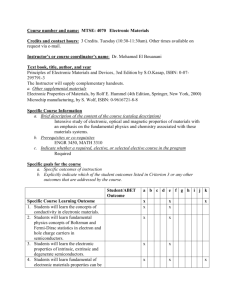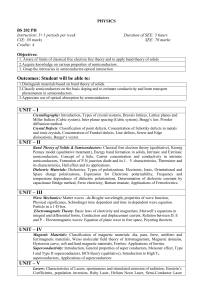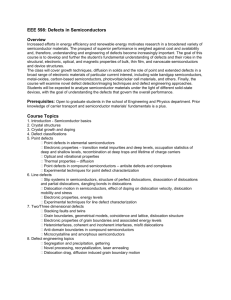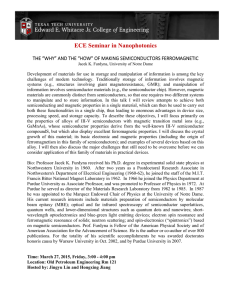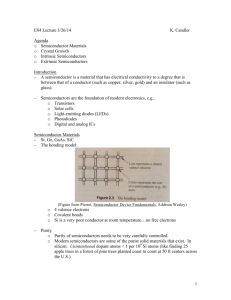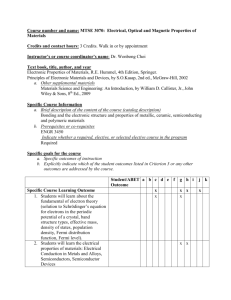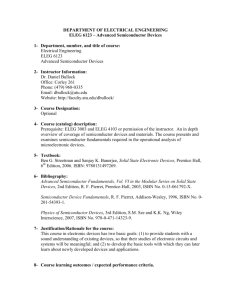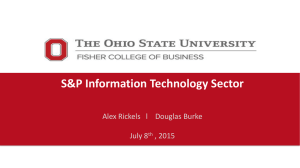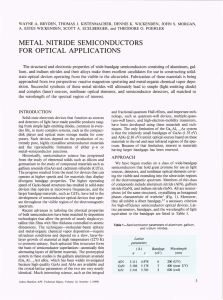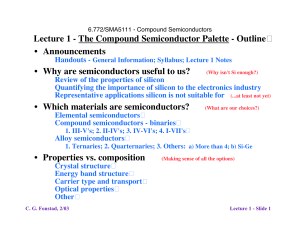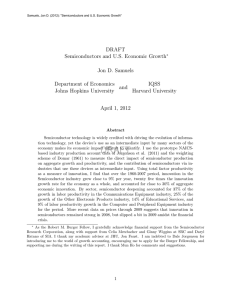Boise State University Fall 2002 Electrical and Computer Engineering Department Prof. Bill Knowlton
advertisement
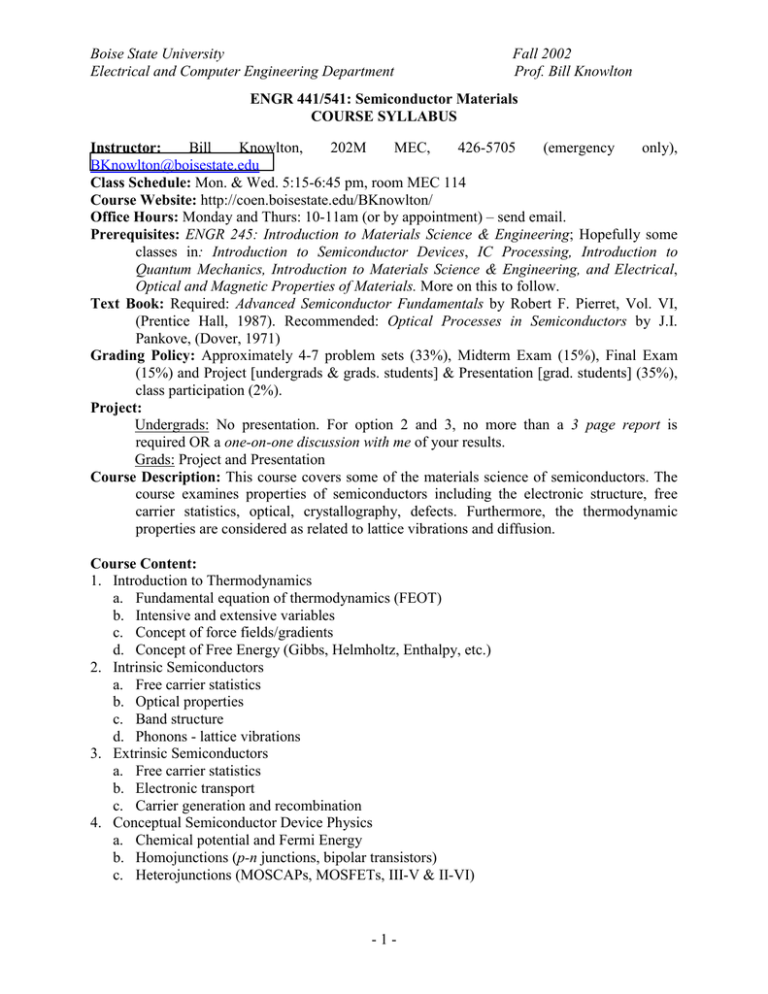
Boise State University Electrical and Computer Engineering Department Fall 2002 Prof. Bill Knowlton ENGR 441/541: Semiconductor Materials COURSE SYLLABUS Instructor: Bill Knowlton, 202M MEC, 426-5705 (emergency only), BKnowlton@boisestate.edu Class Schedule: Mon. & Wed. 5:15-6:45 pm, room MEC 114 Course Website: http://coen.boisestate.edu/BKnowlton/ Office Hours: Monday and Thurs: 10-11am (or by appointment) – send email. Prerequisites: ENGR 245: Introduction to Materials Science & Engineering; Hopefully some classes in: Introduction to Semiconductor Devices, IC Processing, Introduction to Quantum Mechanics, Introduction to Materials Science & Engineering, and Electrical, Optical and Magnetic Properties of Materials. More on this to follow. Text Book: Required: Advanced Semiconductor Fundamentals by Robert F. Pierret, Vol. VI, (Prentice Hall, 1987). Recommended: Optical Processes in Semiconductors by J.I. Pankove, (Dover, 1971) Grading Policy: Approximately 4-7 problem sets (33%), Midterm Exam (15%), Final Exam (15%) and Project [undergrads & grads. students] & Presentation [grad. students] (35%), class participation (2%). Project: Undergrads: No presentation. For option 2 and 3, no more than a 3 page report is required OR a one-on-one discussion with me of your results. Grads: Project and Presentation Course Description: This course covers some of the materials science of semiconductors. The course examines properties of semiconductors including the electronic structure, free carrier statistics, optical, crystallography, defects. Furthermore, the thermodynamic properties are considered as related to lattice vibrations and diffusion. Course Content: 1. Introduction to Thermodynamics a. Fundamental equation of thermodynamics (FEOT) b. Intensive and extensive variables c. Concept of force fields/gradients d. Concept of Free Energy (Gibbs, Helmholtz, Enthalpy, etc.) 2. Intrinsic Semiconductors a. Free carrier statistics b. Optical properties c. Band structure d. Phonons - lattice vibrations 3. Extrinsic Semiconductors a. Free carrier statistics b. Electronic transport c. Carrier generation and recombination 4. Conceptual Semiconductor Device Physics a. Chemical potential and Fermi Energy b. Homojunctions (p-n junctions, bipolar transistors) c. Heterojunctions (MOSCAPs, MOSFETs, III-V & II-VI) -1- Boise State University Electrical and Computer Engineering Department Fall 2002 Prof. Bill Knowlton 5. Defects in Crystalline Semiconductors a. Point defects b. Line defects c. Interface and volume defects 6. Application of Thermodynamics to Diffusion = Kinetics WRT Semiconductors Suggested Bibiliography 1. Callister, W.D., Jr., Materials Science and Engineering: An Introduction. 5th ed. 2000, New York: Wiley. 506. 2. Pierret, R.F., Semiconductor Fundamentals. 2nd ed. Modular Series on Solid State Devices, ed. G.W. Neudeck and R.F. Pierret. Vol. I. 1988, Reading: Addison-Weseley Publishing Co. 146. 3. Blakemore, J.S., Solid State Physics. 1985, New York: Cambridge University Press. 506. 4. Blakemore, J.S., Semiconductor Statistics. 1987, New York: Dover Publications, Inc. 381. 5. Kittel, C., Introduction to Solid State Physics. 6th ed. 1986, New York: Wiley. 506. 6. Ashcroft, N.W. and D.N. Mermin, Solid State Physics. 1976, Philadelphia: Saunders College. 506. 10. Kelly, A. and G.W. Groves, Crystallography and Crystal Defects. 1970, Herndon: TechBooks. 428. 11. Hull, D. and D.J. Bacon, Introduction to Dislocations. third ed. International Series on Materials Science and Technology, ed. H.G. Hopkins. Vol. 37. 1984, Oxford: Pergamon Press. 257. -2-
